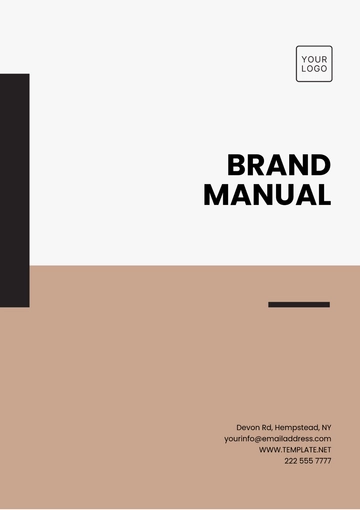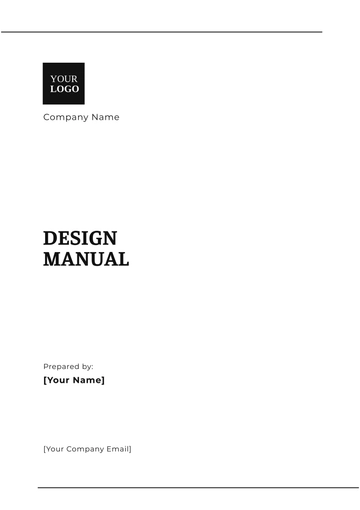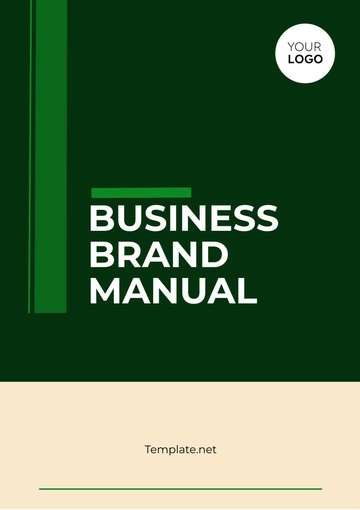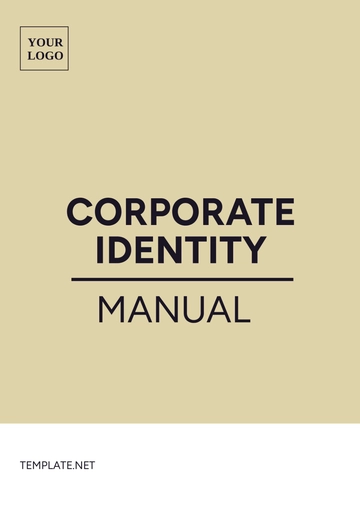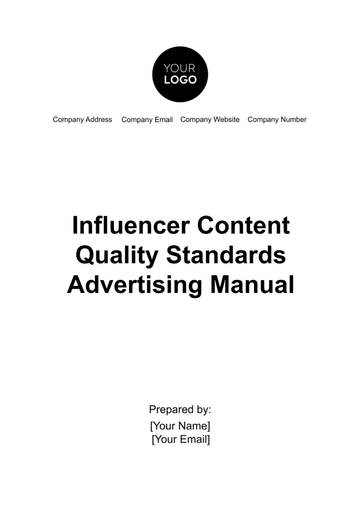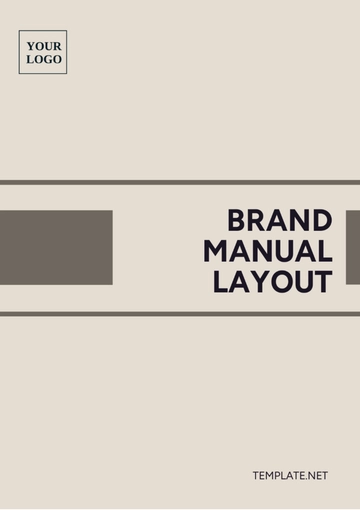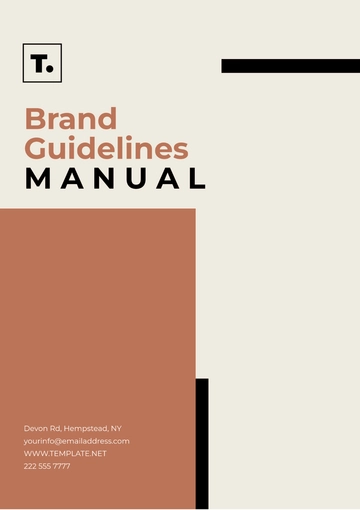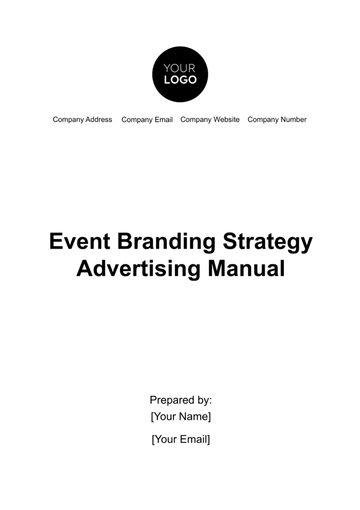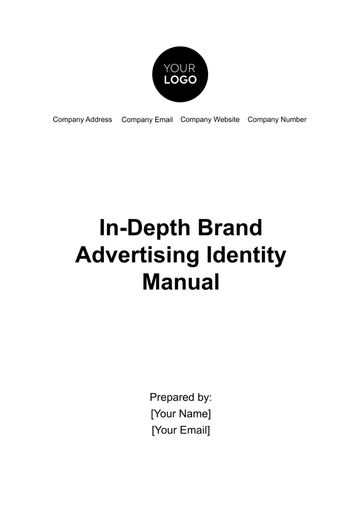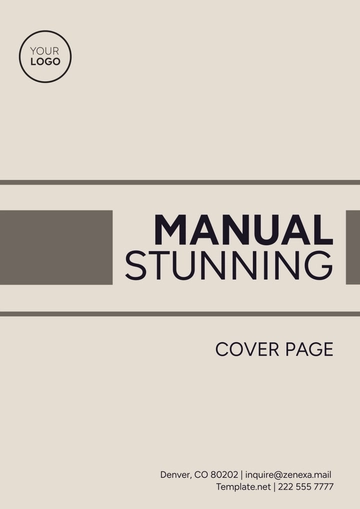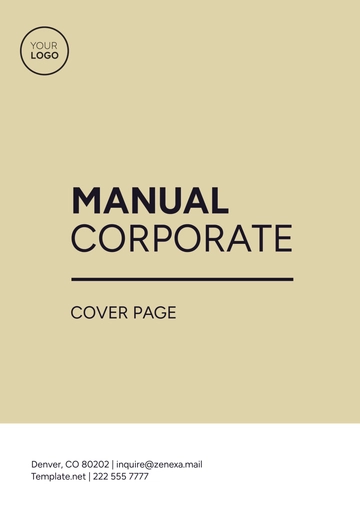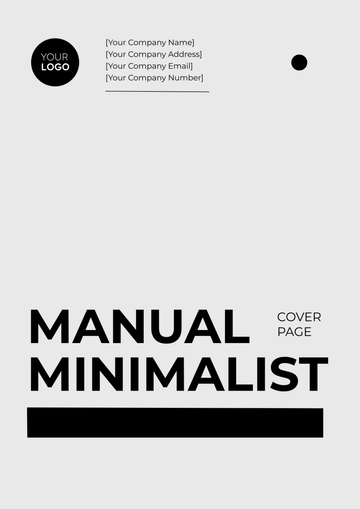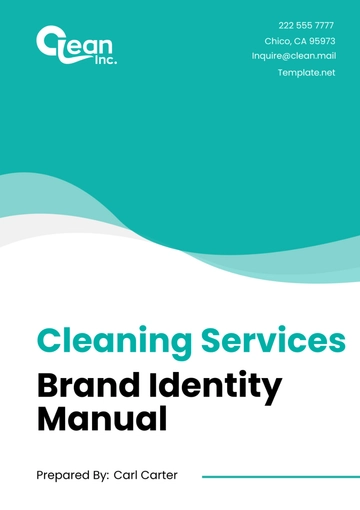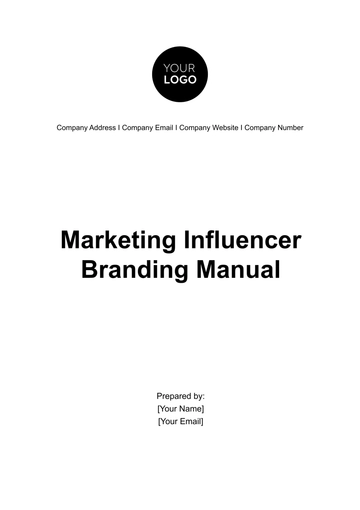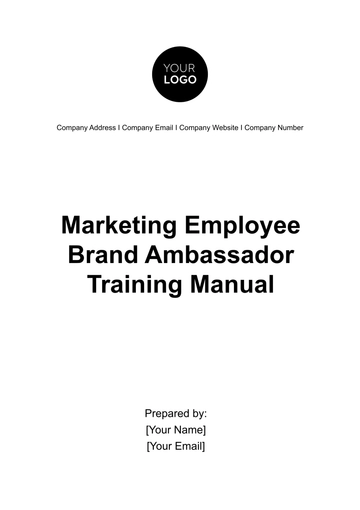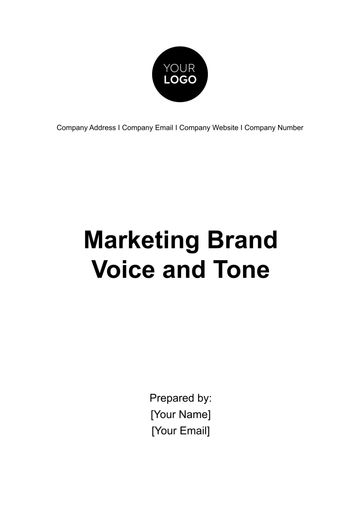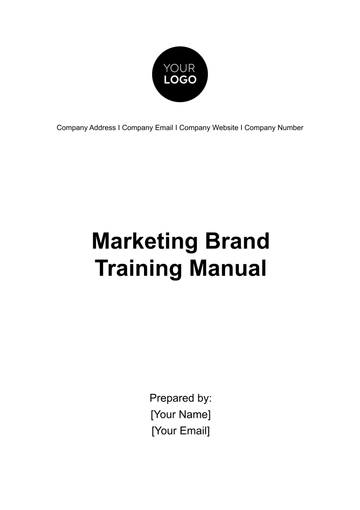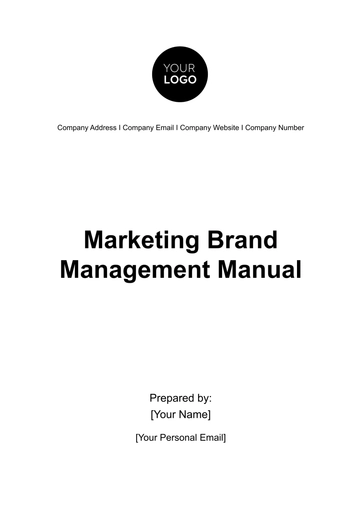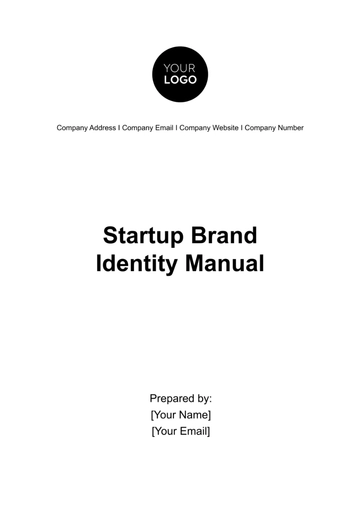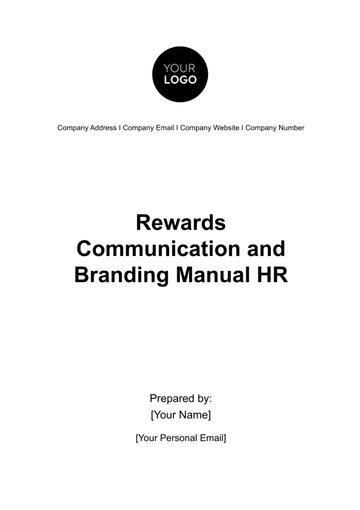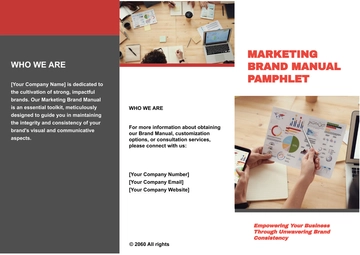Free Corporate Identity Manual
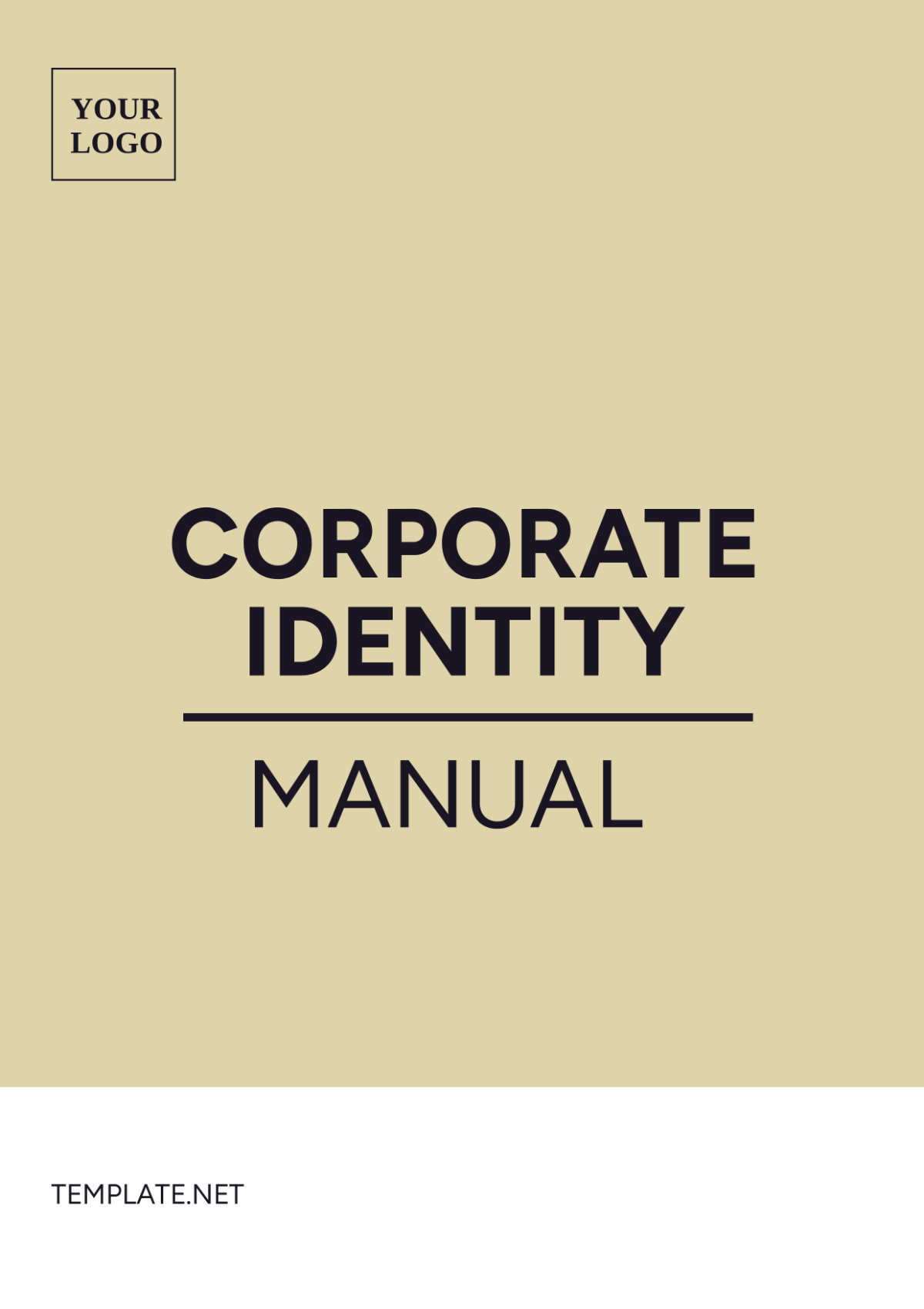
Prepared by | Organization | Department | Date |
|---|---|---|---|
[YOUR NAME] | [YOUR COMPANY NAME] | [YOUR DEPARTMENT] | [DATE] |
I. Introduction
This Corporate Identity Manual outlines [YOUR COMPANY NAME] basic branding standards. This manual includes comprehensive guidelines on our Company's logo, typography, photography, color palette, among others. Adherence to these guidelines will ensure the consistency of our brand's identity across all fronts.
This manual is specifically designed for [JOB TITLE/DEPARTMENT]. Use the guidelines in this manual as an effective tool to communicate [YOUR COMPANY NAME] mission and vision in a cohesive and comprehensive manner.
II. Company Logo
The [YOUR COMPANY NAME] logo serves as a visual representation of our Company's identity. This section details the acceptable variations of the logo, including its size, placement, color, and versions that are fit for specific scenarios.
Logo Variations: Provide guidelines for different versions of the logo, including full-color, grayscale, and black-and-white versions.
Size and Scaling: Specify minimum and maximum sizes for the logo to ensure clarity and legibility across various applications.
Placement: Detail appropriate placement of the logo on different materials such as letterheads, business cards, website headers, etc.
Clear Space: Define the clear space around the logo to maintain visual integrity and prevent crowding.
Prohibited Usage: Outline any restrictions on altering, distorting, or using the logo inappropriately.
III. Typography
Consistent typography usage reinforces[YOUR COMPANY NAME] identity, ensuring legibility and clarity in all communications. This section will outline the typefaces, size, and line spacing that best matches our brand's personality.
Font Recommendations: Specify the primary font(s) to be used for headings, body text, and other elements.
Size and Hierarchy: Provide guidance on font sizes for different text elements to establish a clear hierarchy and readability.
Line Spacing: Recommend appropriate line spacing to enhance readability and visual appeal.
Font Pairing: Offer suggestions for complementary fonts that can be used together for added versatility.
IV. Color Palette
Our color palette consists of primary and secondary colors to be used in our Company's visual elements. These colors play a crucial role in maintaining a unified look that resonates with[YOUR COMPANY NAME] identity.
Primary Colors: Describe the primary brand colors and their significance in conveying the company's identity.
Secondary Colors: Explain the use of secondary colors for accents and supporting elements.
Color Usage Guidelines: Provide instructions on when and how to use each color, including backgrounds, text, and accents.
Color Combinations: Offer examples of effective color combinations to ensure consistency and harmony in visual materials.
V. Photography
Image usage in communications is pivotal to reflect [YOUR COMPANY NAME] personality. This section guides on the selection of appropriate images — corporate, product, or lifestyle, that resonate well with our branding.
Image Selection Criteria: Define the types of images that align with the company's brand values and messaging.
Style Guidelines: Specify preferred photography styles, such as candid, professional, or lifestyle, to maintain consistency.
Technical Specifications: Provide recommendations for image resolution, file formats, and aspect ratios for various applications.
Brand Alignment: Ensure that selected images reflect the company's brand attributes, such as innovation, reliability, or inclusivity.
VI. Contact Information
Accessibility: Ensure that contact details are easily accessible and prominently displayed in all relevant materials.
Responsiveness: Commit to timely responses to inquiries or feedback received via email or phone.
Availability: Specify operating hours or availability for contact, if applicable, to manage expectations.
Alternative Contact Channels: Optionally, provide additional contact methods such as social media handles or physical address for convenience.
Feel free to incorporate these points into the respective sections of your Corporate Identity Manual template.
VII. Brand Messaging
Brand messaging is essential for conveying the values, mission, and vision of [YOUR COMPANY NAME] to our target audience. This section outlines key messaging points and strategies to ensure consistency and alignment with our brand identity.
Key Messaging Points:
Highlight the core values, mission statement, and unique selling propositions of [YOUR COMPANY NAME].
Emphasize key benefits or advantages offered by our products or services.
Communicate the brand promise and commitment to customer satisfaction.
Tone of Voice:
Define the tone of voice that reflects the personality and values of [YOUR COMPANY NAME], such as friendly, professional, innovative, or authoritative.
Ensure consistency in tone across all communication channels, including marketing materials, customer support interactions, and social media posts.
Brand Story:
Share a brief narrative that encapsulates the history, values, and vision of [YOUR COMPANY NAME].
Highlight significant milestones, achievements, and defining moments that shaped the brand's identity.
Connect the brand story with the target audience's aspirations and desires, creating an emotional connection.
VIII. Brand Usage Guidelines
Consistent application of [YOUR COMPANY NAME] brand elements is crucial for brand recognition and perception. This section provides detailed guidelines on how to use logos, typography, colors, and imagery in different contexts, ensuring brand integrity and cohesion.
Logo Usage:
Specify where and how to use the logo, including digital and print materials, and provide examples of acceptable placement.
Define minimum size requirements for maintaining visibility and legibility in various applications.
Typography:
Provide guidelines for font usage on various platforms, ensuring consistency in font styles and sizes.
Specify font sizes for different text elements, such as headings, subheadings, body text, and captions.
Color Usage:
Detail instructions on using primary and secondary colors, including specific color codes or Pantone references.
Provide examples of color combinations to maintain consistency and harmony in visual materials.
Imagery:
Provide guidelines for selecting and using images that align with the brand's values, aesthetics, and target audience preferences.
Offer recommendations for image resolution, aspect ratios, and styles to ensure visual coherence across all brand communications.
IX. Brand Compliance and Enforcement
Adherence to the guidelines outlined in this manual is mandatory for all employees and stakeholders involved in representing [YOUR COMPANY NAME]. This section emphasizes the importance of compliance with brand standards and outlines the consequences of non-compliance.
Enforcement Procedures:
Outline the process for monitoring and enforcing brand guidelines, including regular audits and reviews.
Specify the roles and responsibilities of individuals or departments responsible for ensuring compliance.
Consequences of Non-Compliance:
Clearly communicate the potential repercussions of violating brand guidelines, such as disciplinary actions or loss of privileges.
Stress the importance of upholding brand standards to maintain brand integrity and reputation.
X. Brand Evolution
As [YOUR COMPANY NAME] continues to grow and evolve, periodic updates to the Corporate Identity Manual may be necessary to reflect changes in branding strategies and visual elements. This section outlines the process for revising and updating the manual to ensure its relevance and effectiveness over time.
Revision Process:
Describe the process for initiating, reviewing, and implementing revisions to the Corporate Identity Manual.
Specify the criteria for determining when updates are necessary, such as rebranding initiatives, changes in market trends, or feedback from stakeholders.
Stakeholder Involvement:
Identify key stakeholders, such as senior management, marketing teams, and external agencies, involved in the revision process.
Establish communication channels and collaboration methods to facilitate input and feedback from stakeholders during the revision process.
XI. Conclusion
Thank you for familiarizing yourself with [YOUR COMPANY NAME]'s Corporate Identity Manual. By adhering to the guidelines outlined herein, you play a crucial role in maintaining the integrity and consistency of our brand identity. Should you have any questions or need further clarification on any aspect of the manual, please don't hesitate to reach out to the Branding Department or your supervisor.
We appreciate your commitment to upholding [YOUR COMPANY NAME]'s brand standards and contributing to the success of our organization.
- 100% Customizable, free editor
- Access 1 Million+ Templates, photo’s & graphics
- Download or share as a template
- Click and replace photos, graphics, text, backgrounds
- Resize, crop, AI write & more
- Access advanced editor
Elevate your brand's identity effortlessly with Template.net's Corporate Identity Manual Template. This editable and customizable resource ensures consistency across all brand assets. Crafted with precision, it's editable in our Ai Editor Tool, allowing seamless adaptation to your unique brand guidelines. Streamline your corporate identity management with ease
